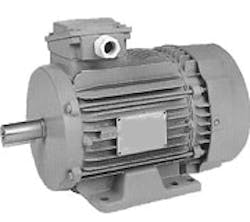Are SingleSpeed AC Motors Any Better?
We upgraded to high-efficiency single-speed ac motors on our metal-cutting machines about five years ago. We are wondering if now is a good time to revisit the motor market and seek improved solutions. What significant improvements, if any, have occurred in the past five years with respect to single-speed ac motors in the 1-25 hp range?
—from March ’09 Control Design
Answers
Not Much. You?
There’s not really much that’s new. Copper rotors make some difference in that they help get more efficiency in a smaller package. I would guess that the price of efficient motors could be lower than it was then, just because there are more suppliers. Some proposed legislation—a NEMA-advocated provision to the Senate energy bill—that creates a premium energy-efficient motor rebate program, if passed, will give good incentive to people to switch to motors with NEMA premium ratings.
There are probably more opportunities for energy savings in examining what the motors are driving. What does the mechanical system look like? Are there opportunities to improve the efficiency of the driven load by looking at gears, belts, bearings and other things?
Rich Mintz, product management group,
SEW-Eurodrive
Next Year’s Model
In the five years since you purchased your high-efficiency motors, the U.S. government passed the Energy Independence and Security Act of 2007 (EISA). This act requires all motors that previously only had to meet EPAct energy-efficiency levels will have to be manufactured to meet higher NEMA premium efficiency levels starting Dec. 19, 2010, so the motors you purchase to meet your application needs will be more efficient, which will save money on energy costs. Added benefits also could include a longer motor life since the premium efficiency design requires the use of better materials and higher quality workmanship to reduce losses. There is no better time to act since utility rebate programs continue to be expanded to help offset the higher costs of NEMA premium motors and minimize the payback period. So yes, I’d say now is a good time to revisit the motor market and seek improved solutions for a longer-lasting motor that will help you save on your energy and maintenance dollars.
George Weihrauch
AC Motors Product Manager
Baldor Electric
Three Is a Magic Number
Five years can be a lifetime for technology, and re-evaluating your drives strategy requires that you re-evaluate the technologies available to you. This includes investigating the numerous benefits that could be achieved by switching to a three-phase motor controlled by an ac drive. Advantages are both financial and performance based. Three-phase motors are a better choice because they are smaller and less expensive; provide excellent torque across a large speed range; eliminate the need for mechanical gearboxes or belts; are more energy-efficient than single-phase motors; don’t require starting capacitors (starting caps are a common weakness for single-phase motor reliability); allow for additional energy savings due to their ability to run at less than full speed; allow for diagnostics and monitoring for predictive maintenance.
Jacob Kimball
Drives Product Manager
Schneider Electric
July’S PROBLEM
We’ve used servo motors for most of our axis-positioning requirements. We hear that some newer stepper motors now incorporate close-loop position control that rivals servos, and still provides better torque. Any evidence out there about this?
SEND US YOUR COMMENTS, SUGGESTIONS OR SOLUTIONS FOR THIS PROBLEM. We’ll include it in the July ’09 issue and post it on ControlDesign.com. Send visuals if you’d like—a sketch is fine. Email us at [email protected]. Please include your company, location and title in the response.
HAVE A PROBLEM YOU’D LIKE TO POSE to the readers? Send it along, too.

